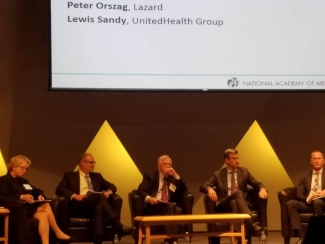One of the major missing ingredients in high-value care that fulfills the Triple Aim is lack of patient-centricity, says one healthcare expert who spoke this morning at the National Academy of Medicine symposium.
He used the example of a patient with Parkinson’s Disease who wants to get his tremors under control to avoid keeping his wife awake at night. The standard of care for his condition would not address this, meaning it would not actually meet the patient’s goals for care.

Boutin was among a panel of experts who discussed the publication of a series of papers commissioned by NAM on a variety healthcare-value-related topics, ranging from benefit design to precision medicine to outcome, quality and cost transparency.
His advice to the next president of the United States: Push for more patient input in healthcare delivery. Boutin compared healthcare’s lack of input from patients to an unwise smartphone manufacturer that changes its product’s color without consulting with consumers.
Panelist Richard Gilfillan, M.D., president and CEO of Trinity Health in Livonia, Michigan, said it’s also vital that organizations engage healthcare providers and actually help them incorporate broader delivery goals into their own routines.
“How do you construct programs that take people who want to do the right thing but are preoccupied with filling beds?” he asked. “It’s important for us to start thinking more deeply about the reality of what this transformation really is [and] consciously engage people in a much more strategic way.”